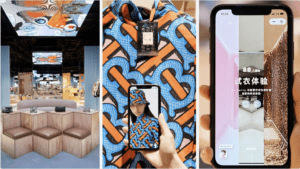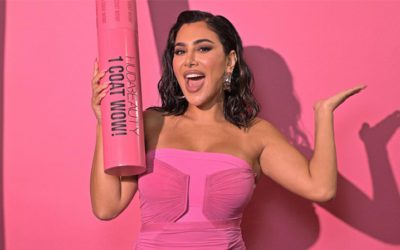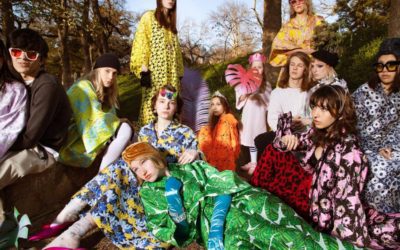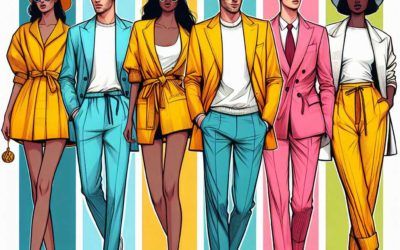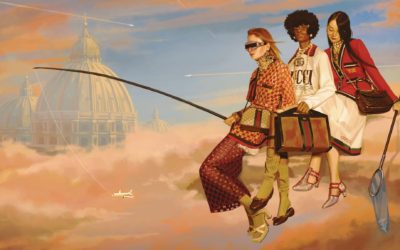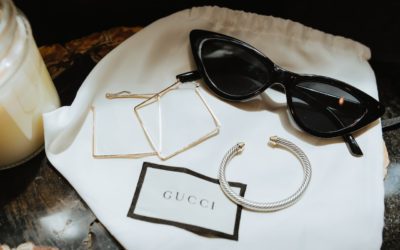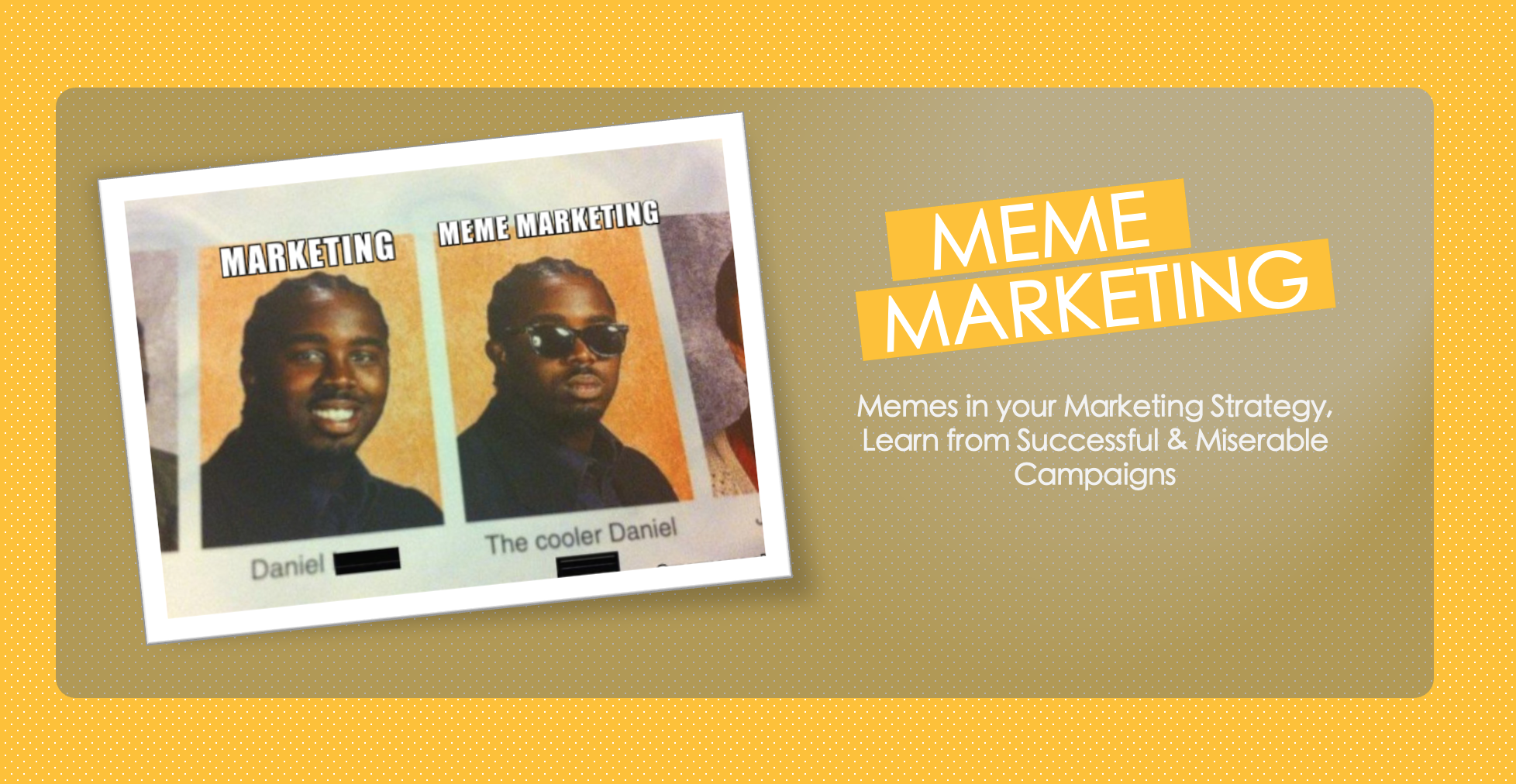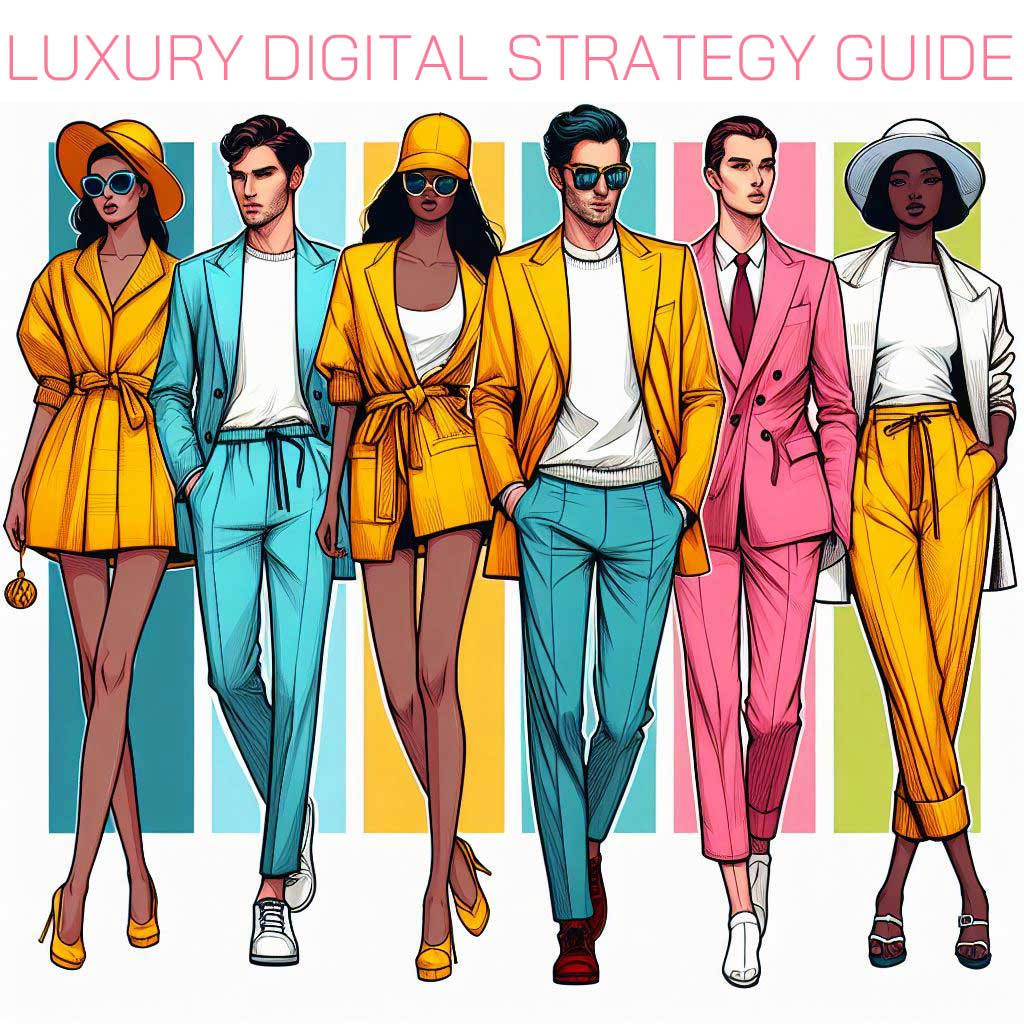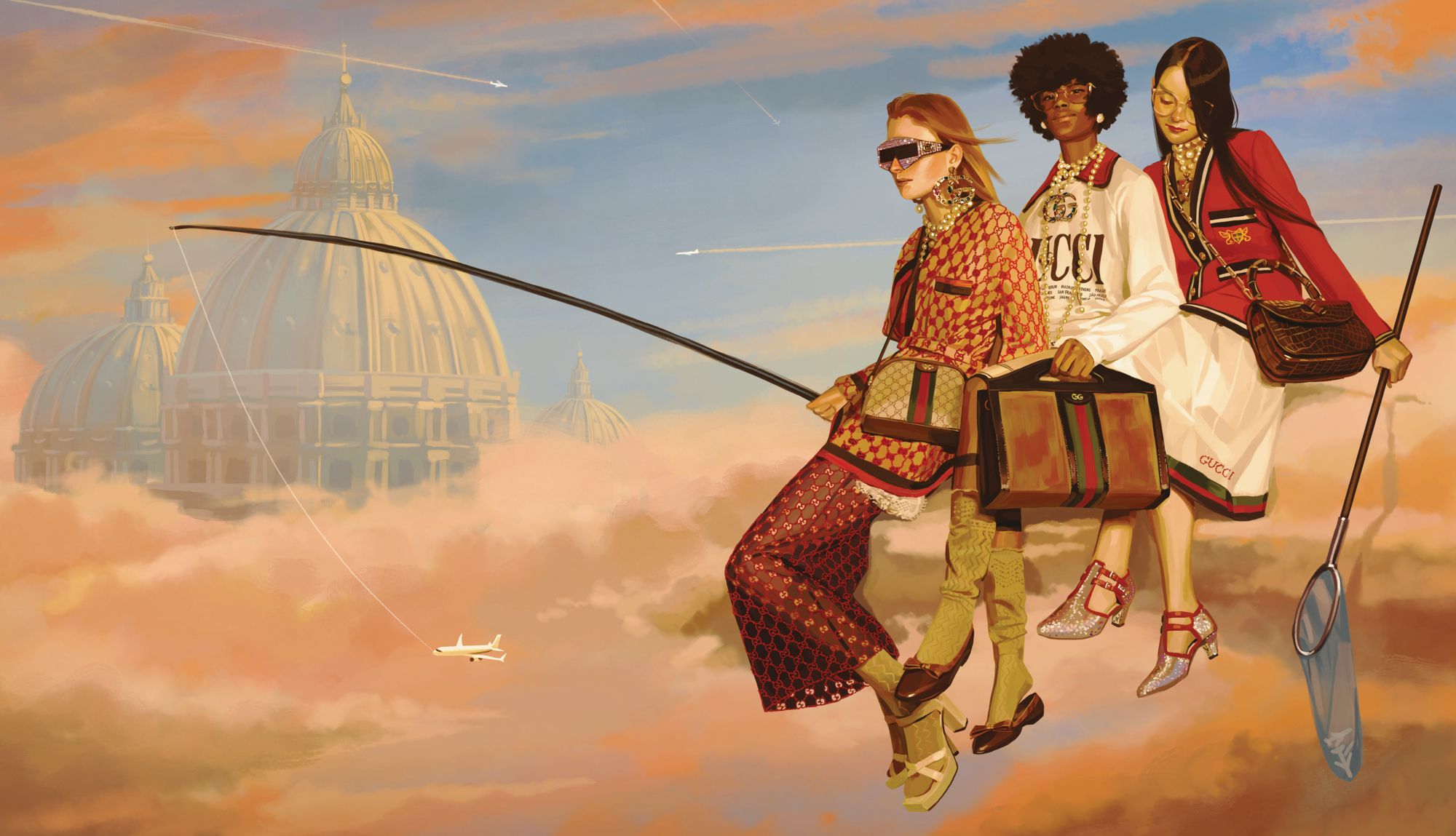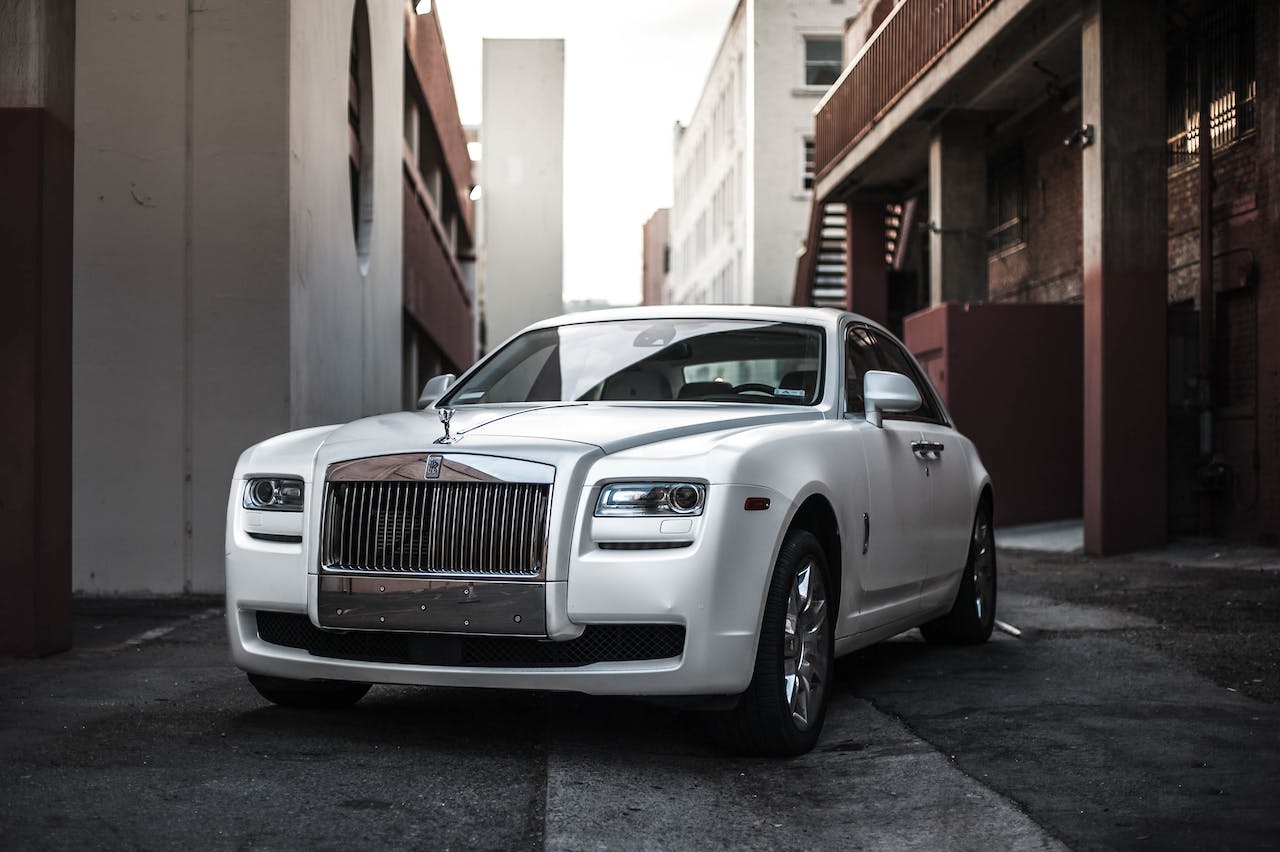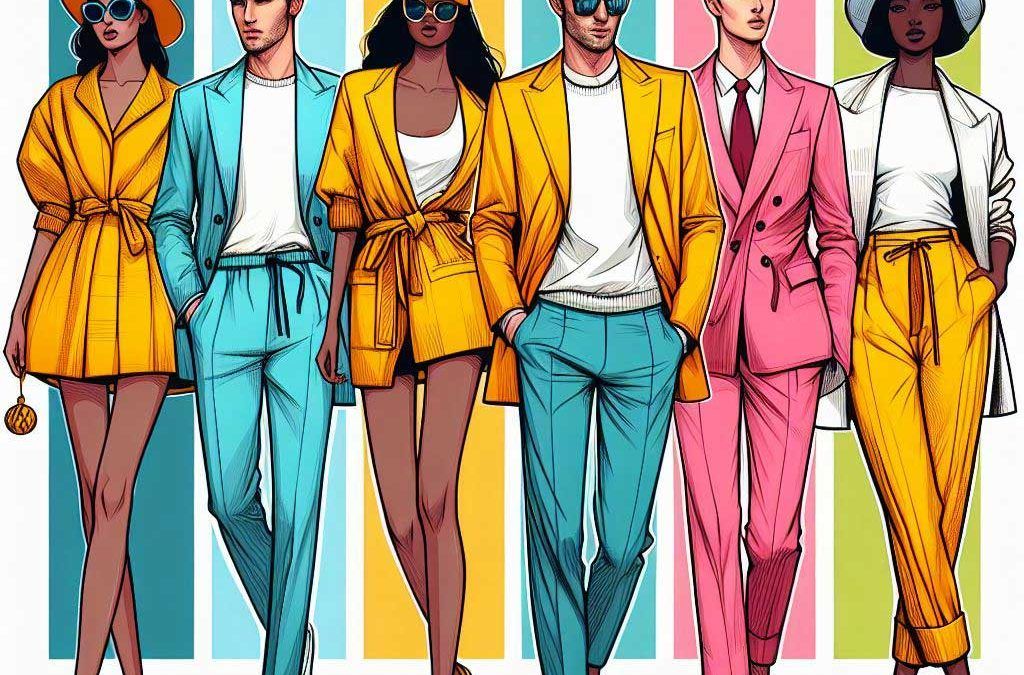The luxury digital trends 2024 are reflecting a massive digital transformation for the industry, driven by changing consumer behavior, technological innovation, and sustainability challenges. The luxury customer is becoming more demanding, conscious and less faithful… how are luxury brands keeping up?
In this article, we will explore the top luxury digital trends and insights for 2024, and how luxury brands can leverage them to create a competitive edge and a loyal customer base.
Luxury Digital Trends 2024 topics:
The Growth of Luxury E-Commerce
Luxury e-commerce is one of the fastest-growing segments in the online retail market, expected to reach $91 billion USD by 2025. Nearly 20 percent of all personal luxury sales will take place online. The way to capitalize on this is to pay attention to the online customer experience and customer journey and adapt new things that align with your brand.
The growth of luxury e-commerce is driven by several factors, such as:
- The solidification of markets, especially in China and other Asian countries, where online luxury sales have steadily grown. China alone accounted for 23% of global online luxury sales in 2020, and is projected to reach 30% by 2025. Japan is also a key market for luxury e-commerce, with a high penetration rate at 47.9% expected in 2024 and is forecasted to grow to 53.4% by 2028.
- The refinement of new technologies, such as 3D visualization, augmented reality (AR), and virtual reality (VR), that have enhanced the online shopping experience and elevate the customer experience online & offline. These technologies enable customers to see, try, and customize products in realistic and immersive ways, as well as to access rich and engaging content.
- The combination of e-concessions and Agile partnerships between brands and wholesalers, while the e-concessions grant brands full control over pricing and products, having a mixed sales approach among the brand’s online store, DTC, and wholesale will complement online & offline customer journeys, this helps with differentiation and the planning and forecasting, while increasing their offering’s attractiveness.
Some examples of how luxury brands have successfully integrated creative e-commerce into their digital strategies are:
- Burberry, which launched its social retail store in Shenzhen, China, in partnership with Tencent. The store combines physical and digital elements, such as interactive displays, QR codes, and a WeChat mini-program, that allow customers to access exclusive content, rewards, and services. The store also features a “trench experience”, where customers can use AR to create digital versions of themselves wearing Burberry products.
- Dior, which launched its Dior and Me service, a 3D virtual try-on tool that allows online customers to see how they look wearing Dior products. The tool uses facial recognition and AR technology to create realistic and accurate simulations of products, such as sunglasses, hats, and earrings. The tool also allows customers to share their looks on social media and to purchase products directly from the website.
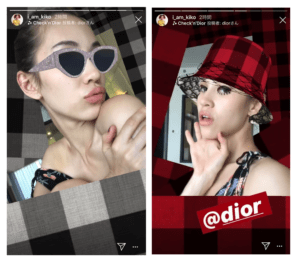
Dior & Me service with the Virtual Try-on tool
The Importance of Customer Experience
Customer experience (CX) is crucial for luxury brands, as it is a key differentiator and a source of competitive advantage. According to a study by McKinsey, CX leaders in the luxury industry generate 54% higher revenue growth than CX laggards. Moreover, CX influences at least 40% of all luxury purchases, either directly or indirectly.
Luxury customers have high expectations and demands, especially the younger generations, who seek more than just products, but also emotions, values, and stories. They want to feel special, seen, and appreciated, and to have a seamless and consistent experience across all touchpoints, both online and offline.
To deliver a superior CX, luxury brands need to leverage digital tools and channels, such as:
- Data and analytics, to understand and anticipate customer needs and preferences, and to offer personalized and relevant offers, recommendations, and services.
- For example, Chanel uses data from its loyalty program, online platforms, and social media to create customer profiles and segments, and to tailor its marketing and communication strategies accordingly.
- Artificial intelligence (AI) and machine learning (ML), to automate and optimize processes, such as customer service, inventory management, and pricing.
- For example, ZOZOTOWN, a Japanese eCommerce platform that showcases over 8,500 luxury & commercial brands and has 11 million customers in Japan as of December 2022, uses AI to design a luxurious hybrid experience of online/ offline fashion styling. The aim is to learn the sweet spot of personalization, product recommendation automation, process sustainability and profitability.
- Customer relationship management (CRM) systems, to manage and nurture customer relationships, and to increase customer loyalty and retention.
- For example, Tiffany & Co. uses CRM to track customer interactions, purchases, and feedback, and to send personalized messages, invitations, and rewards to its customers.

NiauLab from ZOZOTOWN integrates the online/ offline luxury fashion styling
Some examples of how luxury brands have created exceptional customer experiences, both online and offline, are:
- Louis Vuitton, which launched its Horizon Earphones, a pair of wireless earphones that are compatible with its Tambour Horizon smartwatch. The earphones, which are designed by Virgil Abloh, feature the iconic LV logo and come in four colors. The earphones also offer high-quality sound, noise-canceling technology, and a sleek charging case. The earphones are sold online and in select stores, and it is required to enquire online.
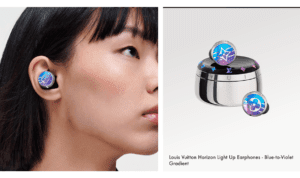
Louis Vuitton Horizon Earphones
- Chanel, which launched its Coco Game Center, a pop-up arcade that featured interactive games inspired by its beauty products. The pop-up, which was held in Tokyo, Shanghai, and Singapore, attracted thousands of visitors, who could play games, win prizes, and try and buy products. The pop-up also generated buzz and engagement on social media, as visitors shared their photos and videos using the hashtag #cocogamecenter.
- Tiffany & Co. and Fendi collaboration, offered an iconic bag available for purchase only for 24 hours. This took advantage of scarcity and build up buzz around it in the time previous to the sale. But it also solved a crucial problem, website crashes and site errors.

Tiffany & Co. & Fendi Collaboration bag available only for 24 hrs.
Luxury Digital Trends 2024: The Impact of Sustainability and Social Responsibility
Sustainability and social responsibility are becoming increasingly important for luxury brands, as they face growing pressure from customers, regulators, and stakeholders to address the environmental and social impacts of their operations. According to a report by Boston Consulting Group, 75% of luxury customers consider sustainability as a key factor in their purchasing decisions, and 70% are willing to pay more for sustainable products.
Luxury brands need to adopt a holistic and strategic approach to sustainability and social responsibility, that covers the entire value chain, from sourcing to production to distribution to consumption. This is to not only meet the luxury customer demands, but also can help in long-term differentiation from the competition.
Some of the actions that luxury brands can take to improve are:
-
- Reducing their environmental footprint, by using renewable energy, minimizing waste, recycling materials, and optimizing logistics.
- For example, Burberry has claimed to have become carbon neutral in 2022, and has achieved 100% renewable electricity in the US, Canada, and the UK.
- Promoting ethical and fair practices, by ensuring the well-being, safety, and rights of their workers, suppliers, and partners, and by avoiding the use of harmful or controversial materials, such as fur, exotic skins, or conflict diamonds.
- For example, Gucci has banned the use of fur and exotic skins in its products, and has joined the Fur Free Alliance, a coalition of animal protection organizations.
- Supporting social causes and initiatives, by donating money, products, or services, or by collaborating with NGOs, charities, or foundations, that align with their values and missions.
- For example, Dior has partnered with the Women @ Dior program, a mentorship initiative that supports young women in pursuing their education and careers in fashion, art, and business.
- Reducing their environmental footprint, by using renewable energy, minimizing waste, recycling materials, and optimizing logistics.
Some examples of how luxury brands have showcased their sustainability and social responsibility efforts are:
- Burberry, which launched its ReBurberry Edit, a collection of 26 styles from its Spring/Summer 2020 runway show, that are made from sustainable materials, such as organic cotton, recycled nylon, and regenerated cashmere. The collection also features a new labeling system, that provides information on the environmental and social impact of each product, such as the amount of carbon emissions, water, and energy saved.
- LVMH, which launched its Life 360 program, a comprehensive strategy that covers all aspects of its environmental and social responsibility, such as climate, circular economy, sourcing, diversity, and philanthropy. The program also includes a set of ambitious targets and indicators, such as reducing greenhouse gas emissions by 50% by 2030, and increasing the use of eco-designed materials by 70% by 2026.
- Coach Japan, which launched its ReLoved campaign, a circular initiative that encourages customers to donate their used Coach bags in exchange for vouchers, and then sells the refurbished bags at a discounted price in its ReLoved stores. The campaign also features a digital platform, where customers can learn about the environmental benefits of circular fashion, and share their stories and photos of their ReLoved bags.
Luxury Digital Trends 2024: The Role of Social Media and Influencer Marketing
Social media and influencer marketing have transformed the luxury landscape, and have become essential tools for luxury brands to reach and engage new and existing customers. According to a report by Launchmetrics, 78% of luxury brands increased their investment in influencer marketing in 2020, and 71% of them considered it as an effective strategy to generate awareness, engagement, and sales.
Social media platforms, such as Instagram, TikTok, and WeChat, offer luxury brands the opportunity to showcase their brand story, personality, and products, and to connect with their customers in a more direct, authentic, and interactive way.
Influencers, such as celebrities, bloggers, vloggers, micro-influencers, and nano-influencers, can help luxury brands to generate trust and credibility, introduce new products and can even do damage control.
Based on a Forbes article, the average Instagram account engagement rate is 4.7%. Micro-influencers average 8% engagement, while macro-influencer average approximately 1.8%.
Some examples of how luxury brands have leveraged social media and influencer marketing to create buzz, awareness, and desire for their collections are:
- Fendi, which launched its Peekaboo bag campaign on Instagram, featuring influencers, such as Naomi Campbell, Zoey Deutch, and Kim Kardashian, posing with their bags and answering questions about their personal lives. The campaign, which used the hashtag #MeAndMyPeekaboo, generated over 100 million impressions and 10 million engagements.
- Givenchy, which launched its Spring 2020 campaign on WeChat, featuring influencers, such as Fan Bingbing, Li Yuchun, and Tang Yan, wearing its products and sharing their stories and inspirations. The campaign, which used the hashtag #GivenchyFamily, generated over 200 million views and 20 million interactions.
- Laura Mercier, which is not partnering with high-profile celebrities, but influencers that suggest future collaborations with complementary products.
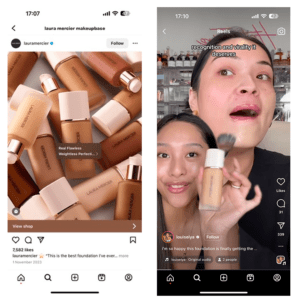
Laura Mercier Instagram campaign utilizing UGC / Influencer content to sell products
Luxury Digital Trends 2024: The Future of Luxury Innovation
Emerging technologies, such as AI, AR, VR, metaverse, livestreaming, and blockchain, can create new opportunities and challenges for luxury brands, as they can enhance the luxury customer experience, product development, marketing, and operations, but also pose ethical and legal implications for luxury brands and consumers. Luxury brands need to innovate and new territory comes with risks, but you could say it is the price of differentiation.
Some examples of how luxury brands have used these technologies to create innovative and immersive digital experiences, products, and services for their customers are:
- Cartier, which launched its Clash [Un]limited collection in the metaverse, a virtual world where users can interact with each other and with digital content. The collection, which features exclusive and customizable jewelry pieces, was presented in a digital showroom, where users could explore, try, and buy the products using their avatars.
- Burberry, which launched its Animal Kingdom collection in AR, a technology that overlays digital content onto the real world. The collection, which features products inspired by the brand’s animal motifs, was presented in an AR app, where users could see, interact, and play with the products and the animals in their surroundings.
- Alexander McQueen, which launched its McQueen Creators project in VR, a technology that creates a simulated and immersive environment. The project, which invited users to create their own versions of the brand’s iconic products, such as the skull scarf and the armadillo shoes, was presented in a VR platform, where users could access tutorials, tools, and materials, and share their creations with the community.
Conclusion
In this article, we have explored the top luxury trends 2024 and its insights, and how luxury brands can leverage them to create a competitive edge and a loyal customer base.
The luxury industry is undergoing a massive digital transformation, driven by changing consumer behavior, technological innovation, and sustainability challenges. Luxury brands need to innovate in order to stay relevant.
If you want to learn more subscribe to our newsletter, or if you know what you want to do but don’t know where to start, let’s chat about it.
See you on the next one! 😊


